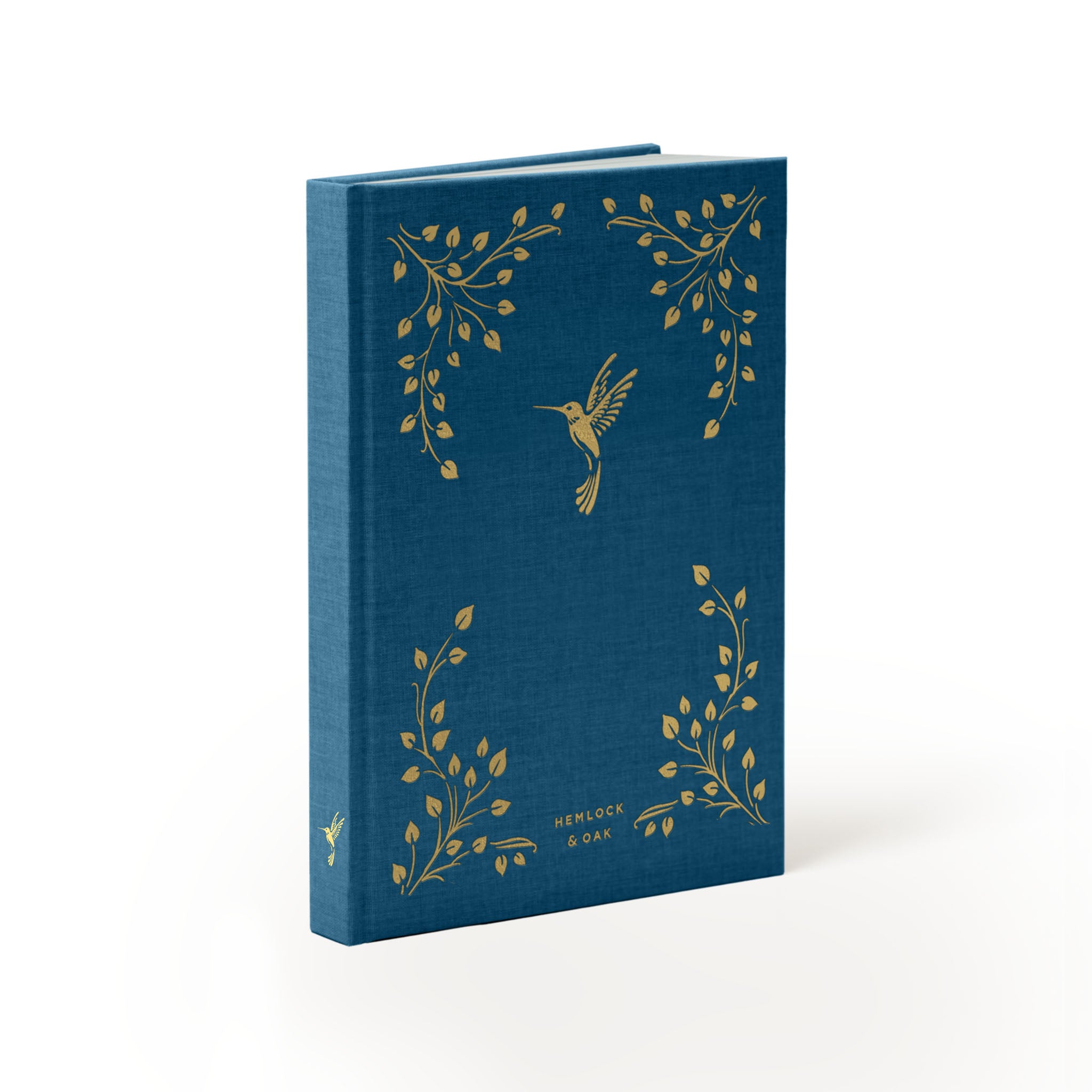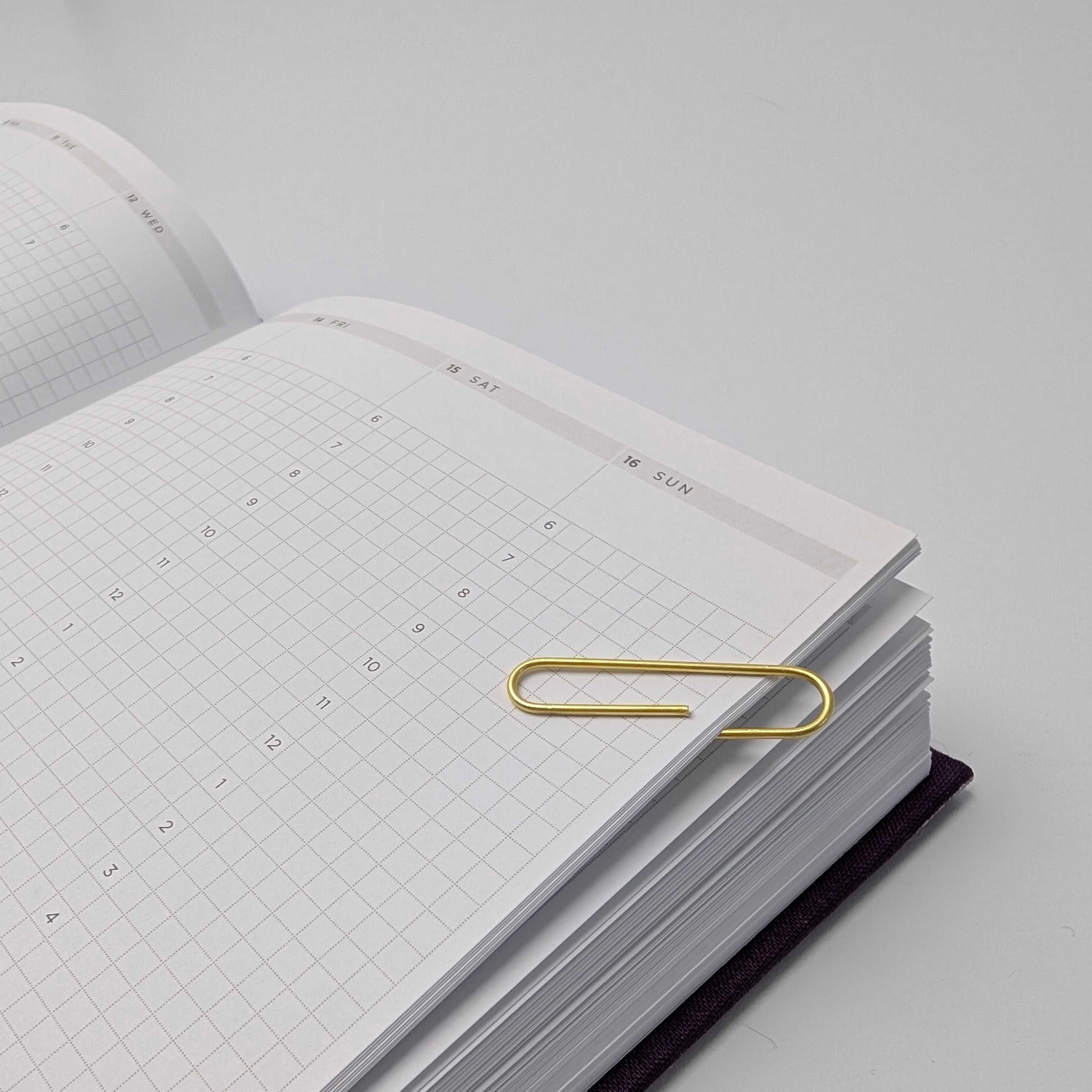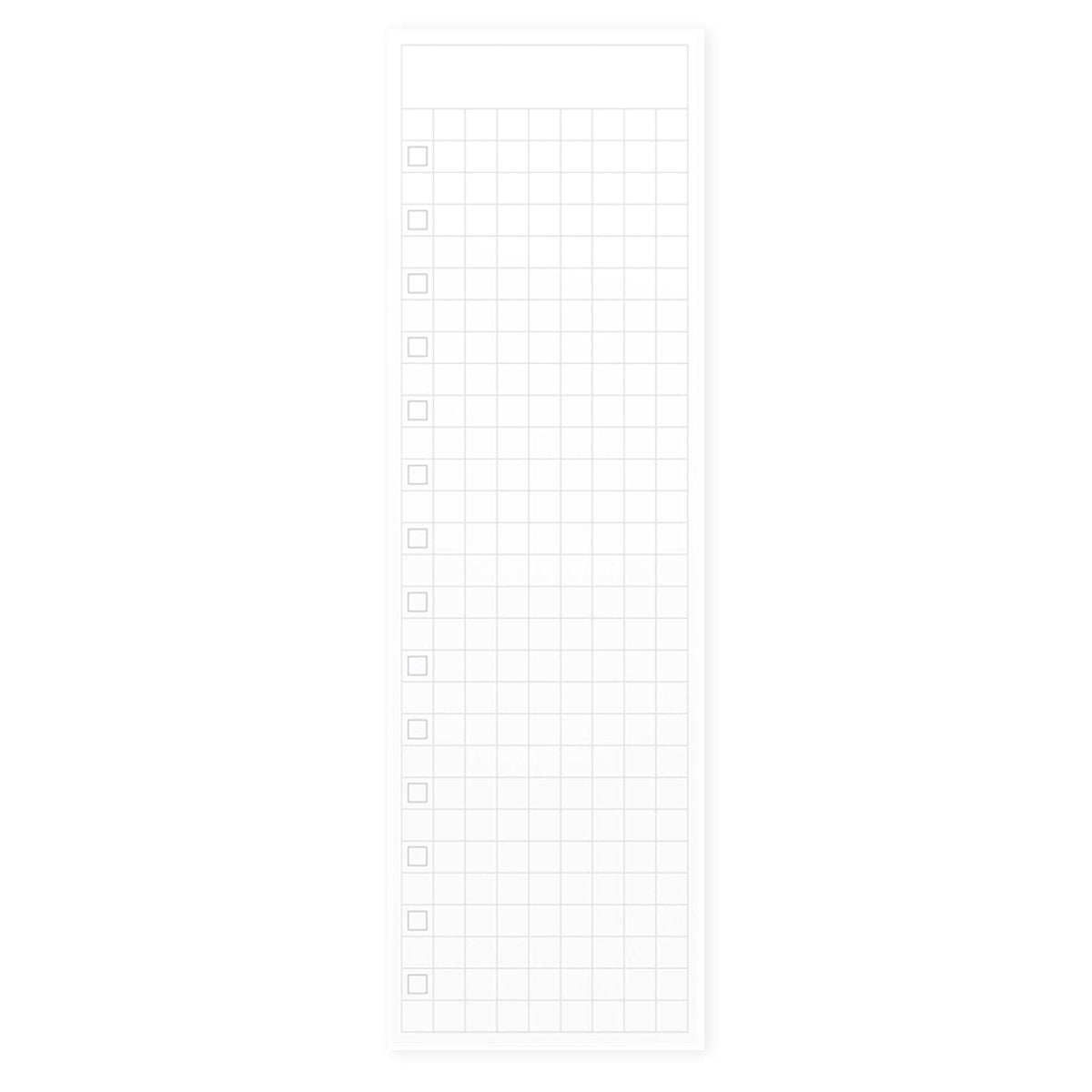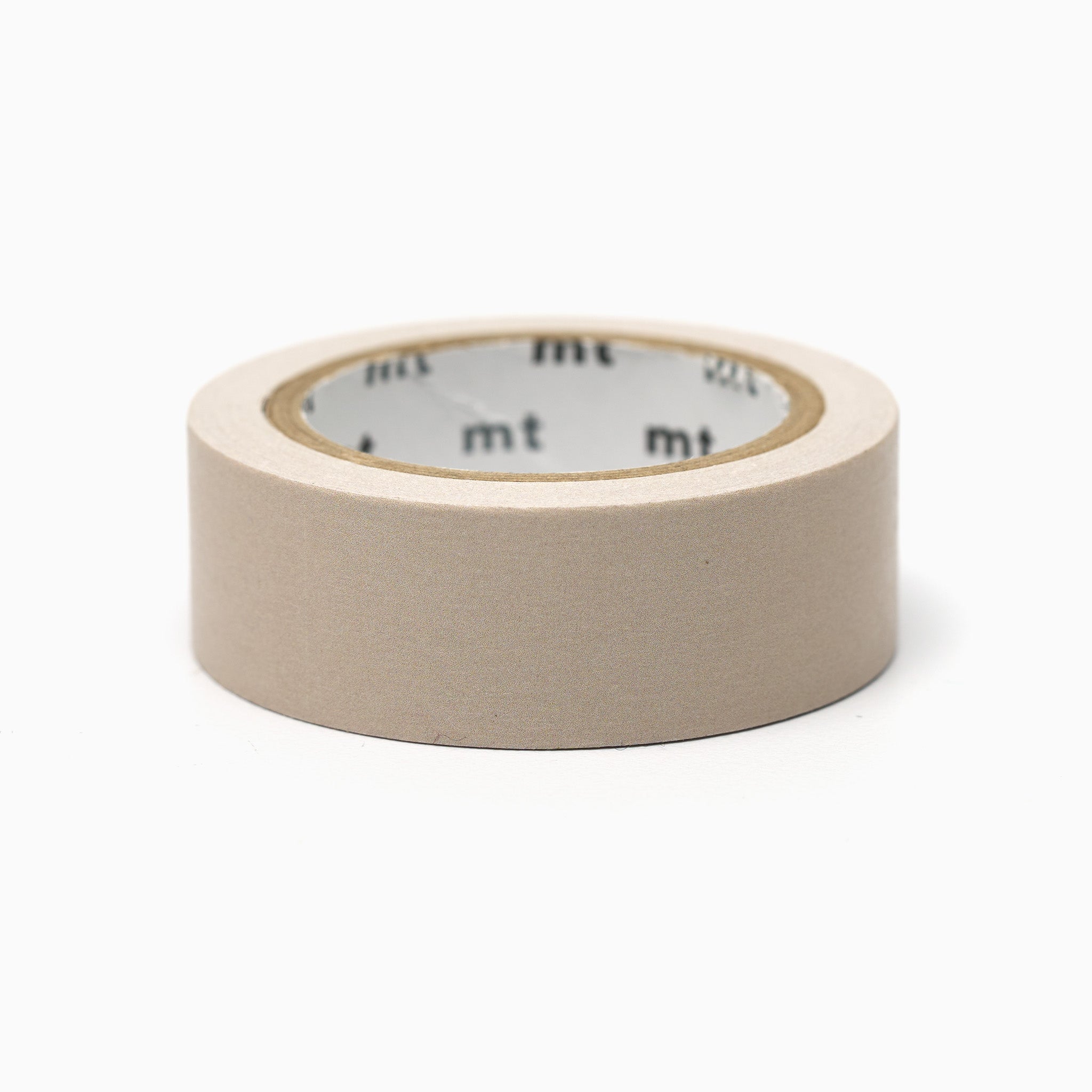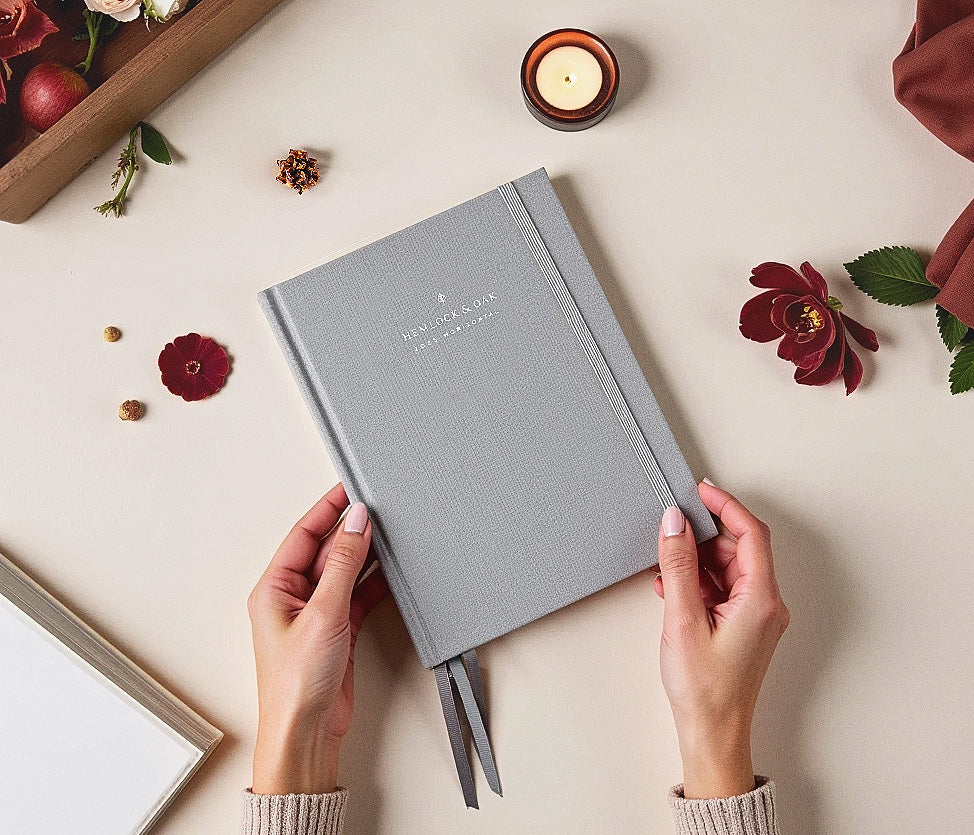

In this Article
Choosing the right planner layout can make all the difference when it comes to staying organized and productive. Whether you're juggling a packed schedule or simply looking for a creative way to keep track of your tasks, finding a layout that fits your lifestyle can transform the way you approach each day. With so many options out there, it can feel overwhelming to pick the right one. That’s why we’ve broken down some of the most popular layouts to help you find your perfect match.
In this guide, we’ll explore four popular planner styles— daily, weekly, horizontal, and highly customizable notebooks (with dot grid or graph paper — sometimes referred to as Bullet Journaling). Each layout has its own strengths, catering to different needs and planning preferences. From the detail-oriented structure of a daily planner to the creative freedom of a bullet journal, you’ll discover which one best supports your goals, schedule, and personal style!
Ready to dive in? Let’s explore the features of each layout and how they can help you stay on top of your tasks, boost your productivity, and bring more balance to your life. Maybe we can help you make the decision on your 2025 planner layout!
Daily Planners
What is a Daily Planner?
A Daily Planner layout is a layout where you can plan your entire day on one or two pages. It's all about having breathing room to write down a long list of tasks, journal, and make sections that suit your days.
Who is a Daily Planner Layout For?
Daily planner layouts are designed for individuals who require extensive space to organize and detail their daily activities, tasks, and appointments. Unlike weekly or monthly planners, daily planners allocate an entire page—or even more—to each day, providing ample room for comprehensive scheduling and note-taking.
Daily planner layouts are particularly beneficial for professionals and/or educators who need extra writing space. For instance: executives and managers could use a daily planner to outline meetings, set agendas, and jot down important notes or ideas that arise throughout the day.
Should I Try a Daily Layout?
To know if a daily planner will work for you, it's best to reflect on your lifestyle to see if it would be a good fit. It's also a good idea to find free downloads of daily planners online to print at home and test before making any purchase.
Here are some questions you can ask yourself before deciding on whether or not a 2025 daily layout would work for you:
- You prefer to plan out your day in detail. Daily planners give you ample room to expand on tasks, create subtasks, and make complex schedules.
- You struggle to fit your to-dos and schedule into most planners. Then a daily planner will give you more room to write.
- Long-term planning can overwhelm you. Forget about the week: a single day has too many fires for you to put out. If this is the case, then a daily planner will help you keep your focus on the present instead of adding to your future mental load.
- You want to keep notes to yourself and/or journal in the same area as your planner. A daily planner usually has enough room to allow for daily journaling, reflection, tracking, and more.

One of the best ways to start your day is by identifying your top three priorities. It’s easy to get caught up in the long list of things you could do, but narrowing it down to the essentials keeps you focused on what truly matters. Having those few key goals gives you clarity, especially when the day starts to feel chaotic.
To take it to the next level, you could pair this with time-blocking , where you divide your day into dedicated chunks for different tasks. Instead of juggling everything at once, you’ll find it easier to stay on task when you know there’s a set window for each activity.
For example, you could reserve your morning for high-focus tasks and leave the afternoon for meetings or more flexible work. Time-blocking creates structure, and that structure helps prevent distractions from taking over.
Tip: Try color-coding your tasks! Use one color for work, another for personal, and a third for family. This will make it easier to find everything at a glance.
If you don't have a lot of appointments or meetings and feel like your planner seems a bit empty, try using the planner to dive deeper into the tasks you do have. Break larger tasks into smaller, manageable steps. For example, instead of writing "Complete project report," break it down into smaller actions like "Outline report," "Gather data," and "Write draft." This gives you a clear picture of progress and keeps you motivated as you check off each part.
One of the downsides of using a daily planner layout is that your planner will end up using more pages than a weekly planner layout. If you already have a notebook that you want to use for a daily planner, you can always split the months between different books if you end up running out of pages.
Why Use a Weekly Planner Layout?

If you're looking for a bird's-eye view of your week, a Weekly Planner layout might be the perfect fit. Unlike daily planners that focus on the details of each day, a weekly layout helps you balance longer-term tasks and commitments. It's ideal for those who need to manage several ongoing projects, track habits over a week, or like to plan ahead.
So, how do you know if a weekly planner layout is right for you? Ask yourself these questions:
- Do you prefer to plan your schedule in bigger chunks?
- Do you like having an overview of your week to see how your personal and work tasks line up?
- Are you managing multiple projects or events that span over several days?
- Do you find it helpful to track habits or progress over a longer time frame?
- Do you want to avoid feeling overwhelmed by just focusing on a few key tasks each week?
A weekly planner layout is all about providing a broader perspective, making it a powerful tool if you like to see how your tasks, events and goals fit together over the course of several days. One of the greatest benefits of this layout is its ability to help balance multiple areas of your life - work, personal growth, fitness goals, and even social plans, without feeling like you're losing sight of the big picture. By laying out your entire week on a single spread, you can plan for the upcoming week, while still leaving room for flexibility. The vertical layout helps you see how your time flows from morning to night.
A great strategy for using a weekly layout is to start by blocking out the most important things, like meetings, appointments or deadlines you know you need to prioritize. Once you’ve mapped out those anchors, you can begin to fill in other tasks and goals. The beauty of this approach is that it allows you to see how much free time you truly have, so you can schedule important tasks around these fixed points without overloading any single day.
Weekly layouts also lend themselves to setting realistic goals. Instead of trying to squeeze everything into one day, you can spread your tasks across the week. For example, you might focus on research for a project early in the week, and save the later days for execution and review. This way, you’re always moving forward without the pressure of finishing everything immediately. And with a weekly overview, you can more easily adjust if things come up mid-week, allowing you to shuffle tasks around rather than feeling like you’ve “failed” to complete them on a specific day.
Another advantage of a weekly layout is the ability to track progress over time. If you're working on something that builds gradually, like a long-term project or a fitness routine, it’s easier to see how far you’ve come by comparing the beginning and end of the week. You can also use it to spot patterns—maybe you’re more productive at the start of the week, or you notice that your energy dips by Thursday. With this awareness, you can adapt your planning to play to your strengths.
Lastly, a weekly planner helps prevent burnout by encouraging you to pace yourself. Instead of focusing only on the daily grind, you can ensure you have a mix of productivity and rest throughout the week. Planning out your downtime or lighter tasks is just as important as scheduling work. This balance keeps you from feeling overwhelmed while still making steady progress toward your goals.
Horizontal Planners

What is a Horizontal Planner Layout?
A horizontal planner layout has the days of the week horizontally spanned across one or two pages. They are a type of weekly format, allowing you to see your week at-a-glance.
However, there is less of a focus on time-blocking and scheduling. Instead, it's ideal for those who prefer a simpler way to plan without the clutter of schedules.
Who can benefit from a Horizontal Layout?
If you prefer a more open and spacious way of organizing your time, a Horizontal Planner layout might be the perfect fit. In contrast to vertical layouts, where days are split into narrow columns or hourly blocks, a horizontal planner gives you more room to write freely across the page. Each day typically spans a full row, making it easier to view your schedule as a linear flow rather than breaking everything down into tight, structured sections.
Here are a few signs a Horizontal Planner layout could work for you:
- Do you like having more room to write out tasks, ideas, or reminders without feeling restricted by space?
- Are you someone who focuses more on general daily tasks than on scheduling your day down to the minute or hour?
- Do you find it helpful to have a more fluid view of your day, without the need for rigid time slots or detailed to-do lists?
- Do you enjoy incorporating creative elements, like doodles or freeform notes, into your planning routine?
Horizontal planners stand out because of their simplicity and flexibility. Rather than being confined to a strict schedule, they provide a broader space for you to plan the essentials while still leaving room for creativity or additional notes. This format works especially well if you don’t need to track every minute of your day but prefer to list your key tasks or reminders more freely. You might have only a few key things to accomplish each day, but the extra room allows you to note details, thoughts, or even reflections as your day unfolds.
For someone who thrives on visual clarity without the pressure of structure, a horizontal layout can feel less overwhelming. You’re not staring at a long to-do list or hourly slots—just a simple, clear spread where you can map out the flow of your week without overcomplicating things. This is especially helpful for those who like to balance work tasks with broader life goals or reflective moments. Each day has enough room to breathe, allowing you to jot down both tasks and creative thoughts.
Additionally, if you're someone who enjoys combining planning with creativity, the horizontal format gives you the space to sketch, doodle, or create mind maps. It’s perfect for those who prefer a little spontaneity in their planning process, as there’s room to make your planner feel more personalized. Whether you use it to brainstorm ideas, add motivational quotes, or simply reflect on the week’s events, the horizontal layout gives you the freedom to plan beyond just tasks and deadlines.
Looking for more inspiration on how to use a horizontal planner layout for 2025? Check out our blogpost on How to Best Use a Horizontal Layout Weekly Planner!
Why Try a Dotted Notebook?
If traditional planner layouts don’t quite fit your style, a dotted notebook could be the perfect alternative. While it’s not a standard layout like daily, weekly, or horizontal formats, a dotted notebook (often referred to as a bullet journal or bujo) offers complete flexibility to design your planner exactly the way you want. Bullet Journals have a customizable approach to organizing tasks, tracking goals, and even documenting personal thoughts or creative ideas—all in one place. Instead of being confined to a set structure, a Bullet Journal allows you to create your own, adapting it to fit your evolving needs.
Here are some questions to ask yourself if you’re considering a Bullet Journal:
- Do you prefer a customizable planning system that can be easily adapted to your changing goals or tasks?
- Are you someone who enjoys adding personal flair—like doodles, habit trackers, or creative elements—to your planner?
- Do you want a system that lets you track everything from work projects to personal reflections, all in one notebook?
- Do you find it helpful to create your own unique layouts that suit your planning style, instead of following predefined templates?
Unlike other planners with fixed layouts, a Bullet Journal is a blank canvas for you to fill however you like. Whether you need detailed daily logs, a broad overview of your week or month, or space for habit trackers and reflections, a Bullet Journal can handle it all. One of the key elements of a Bullet Journal is the use of bullet points (hence the name) to track tasks, events, and notes. You can create simple symbols to quickly identify what needs to be done, what’s been completed, and what’s been moved to another day. This makes it a streamlined, at-a-glance system that’s perfect for staying organized while keeping things minimal.
But the beauty of a Bullet Journal is that it goes beyond just task management. You have complete freedom to include anything that matters to you. Want a space to track your water intake or exercise routine? Create a habit tracker. Need to brainstorm ideas for a new project? Dedicate a page to it. From gratitude logs to creative sketches or even financial planning, a Bullet Journal can be molded to fit every aspect of your life.
Another benefit of the Bullet Journal is its flexibility for long-term planning. Unlike pre-printed planners where unused pages go to waste, a Bullet Journal lets you create layouts on the go. Whether you’re planning out your week or just today’s tasks, you only use the space you need. If your schedule changes or your priorities shift, you’re not tied to a specific structure—you can pivot easily, adding new pages or reorganizing your system to suit your current needs.
For creative minds, a Bullet Journal also allows for endless customization. You can design your spreads to be as minimal or decorative as you want. Some people like to incorporate art, stickers, and color-coded systems, while others stick to a minimalist black-and-white format. The flexibility and personalization of a Bullet Journal make it a favorite for those who want their planner to be more than just a place to track tasks—it can be a tool for self-expression and reflection.
In essence, a Bullet Journal is ideal if you crave flexibility, enjoy a bit of creativity in your planning, and want a system that evolves with your changing goals and lifestyle. It’s a method that blends function with personalization, allowing you to truly make your planner your own.
Free 2025 planner layout downloads (PDF)
Want to try out some different planner layouts for yourself? At Hemlock & Oak we have free printable PDF downloads available for all our 2025 planners. Click on one of the following links to take a peek and print out your favorite 2025 planner layout to try at home!
So, what 2025 planner layout are you choosing?
Choosing the right planner layout is all about finding what works best for your unique style, goals, and daily needs. Whether you prefer the structure of a daily planner, the big-picture view of a weekly layout, the flexibility of a horizontal planner, or the endless possibilities of a bullet journal, there’s a layout out there that can help you stay organized and productive.
Remember, your planner is a tool designed to support you, not restrict you. Feel free to experiment with different layouts until you find the one that fits seamlessly into your life. With the right approach, you’ll not only stay on top of your tasks but also create space for creativity, reflection, and balance in your day-to-day routine.
Now that you’ve explored these options, which planner layout will you choose for 2025? Whatever you decide, we hope this guide has inspired you to take charge of your schedule and make the upcoming year your most organized and fulfilling one yet.



